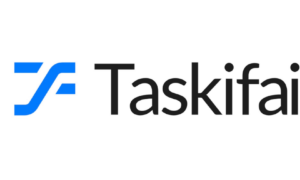In an era where digital threats are constantly evolving, cybersecurity has become a paramount concern for businesses of all sizes. Small businesses and large enterprises alike face the challenge of protecting sensitive information and maintaining the integrity of their operations. Selecting an appropriate cybersecurity framework is a crucial step in fortifying your organization against potential cyber threats. However, the needs and considerations for small businesses differ significantly from those of large enterprises. In this comprehensive guide, we’ll explore the factors that should be taken into account when choosing a cybersecurity framework, tailored to the unique requirements of both small businesses and large enterprise
Understanding the Basics: What is a Cybersecurity Framework?
Before delving into the considerations for small businesses and large enterprises, let’s establish a common understanding of what a cybersecurity framework is. In essence, a cybersecurity framework is a set of guidelines, best practices, and standards designed to help organizations manage and improve their cybersecurity posture. These frameworks provide a structured approach to identifying, protecting, detecting, responding to, and recovering from cybersecurity incidents.
Factors to Consider for Small Businesses
- Resource Constraints
Small businesses often operate with limited resources, including budget and personnel. When selecting a cybersecurity framework, it’s crucial to consider solutions that are cost-effective and don’t require extensive manpower for implementation and maintenance.
- Ease of Implementation
Simplicity is key for small businesses. Opt for frameworks that are easy to implement without demanding complex configurations. This ensures that cybersecurity measures can be put in place swiftly, minimizing the vulnerability window.
- Scalability
Small businesses might grow rapidly, and the chosen framework should be scalable to accommodate increased data and user loads. The cybersecurity solution should adapt seamlessly to the evolving needs of the business.,
- Vendor Support
Choose a framework that comes with reliable vendor support. Small businesses may lack an in-house IT team, making external support vital for troubleshooting, updates, and addressing potential security issues.
- Compliance Requirements
Understand the specific compliance requirements relevant to your industry. Many small businesses operate in highly regulated sectors, and adherence to compliance standards is non-negotiable. Ensure the chosen framework aligns with these regulations.
Factors to Consider for Large Enterprises
- Complex IT Infrastructure
Large enterprises typically have intricate IT environments with diverse systems and applications. The cybersecurity framework should be capable of integrating seamlessly with this complexity to provide comprehensive protection.
- Advanced Threat Detection and Response
Large enterprises are often targeted by sophisticated cyber threats. The chosen framework should include advanced threat detection and response capabilities, employing artificial intelligence and machine learning to identify and mitigate emerging threats.
- Customization and Flexibility
A one-size-fits-all approach may not suffice for large enterprises. Look for frameworks that offer customization options to align with the organization’s specific security needs and policies.
- Regulatory Compliance at Scale
Large enterprises often operate in multiple regions, each with its own set of regulations. The cybersecurity framework must ensure compliance at scale, addressing the intricate web of regulatory requirements.
- Incident Response Planning
Develop a robust incident response plan within the framework. Large enterprises are more likely to face complex cyber incidents, and a well-defined plan helps minimize damage and downtime in the event of a security breach.
Common Considerations for Both
- User Training and Awareness
Irrespective of size, user awareness is critical. Ensure that the cybersecurity framework includes provisions for ongoing training and awareness programs to empower users in recognizing and mitigating potential threats.
- Regular Updates and Patch Management
Cyber threats are ever-evolving, and a cybersecurity framework is only as strong as its latest update. Both small businesses and large enterprises must prioritize regular updates and effective patch management to address vulnerabilities promptly.
- Data Encryption and Privacy
Protecting sensitive data is a universal concern. Choose a framework that prioritizes data encryption and privacy measures to safeguard critical information from unauthorized access.
- Continuous Monitoring and Auditing
Implement continuous monitoring and auditing processes to track and assess the effectiveness of the cybersecurity measures. This allows for the identification of potential weaknesses and the prompt implementation of necessary improvements.
- Integration with Business Goals
The cybersecurity framework should align with the overall business objectives. It’s not merely a compliance checkbox but an integral part of safeguarding the organization’s reputation, customer trust, and long-term sustainability.
Conclusion
The selection of a cybersecurity framework is a pivotal decision for both small businesses and large enterprises. Understanding the unique needs and challenges of each size category is essential for making an informed choice. Whether grappling with resource constraints or managing a complex IT infrastructure, the right cybersecurity framework can be a cornerstone in building a resilient defense against the ever-evolving landscape of cyber threats. By considering the factors outlined in this guide, businesses can take a proactive stance in protecting their digital assets and ensuring the security of their operations.



































